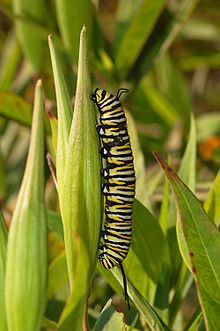
Pain in invertebrates is a contentious issue. Although there are numerous definitions of pain, almost all involve two key components. First, nociception is required. This is the ability to detect noxious stimuli which evokes a reflex response that moves the entire animal, or the affected part of its body, away from the source of the stimulus. The concept of nociception does not necessarily imply any adverse, subjective feeling; it is a reflex action. The second component is the experience of "pain" itself, or suffering—i.e., the internal, emotional interpretation of the nociceptive experience. Pain is therefore a private, emotional experience. Pain cannot be directly measured in other animals, including other humans; responses to putatively painful stimuli can be measured, but not the experience itself. To address this problem when assessing the capacity of other species to experience pain, argument-by-analogy is used. This is based on the principle that if a non-human animal's responses to stimuli are similar to those of humans, it is likely to have had an analogous experience. It has been argued that if a pin is stuck in a chimpanzee's finger and they rapidly withdraw their hand, then argument-by-analogy implies that like humans, they felt pain. It has been questioned why the inference does not then follow that a cockroach experiences pain when it writhes after being stuck with a pin.[1] This argument-by-analogy approach to the concept of pain in invertebrates has been followed by others.[2]
The ability to experience nociception has been subject to natural selection and offers the advantage of reducing further harm to the organism. While it might be expected therefore that nociception is widespread and robust, nociception varies across species. For example, the chemical capsaicin is commonly used as a noxious stimulus in experiments with mammals; however, the African naked mole-rat, Heterocephalus glaber, an unusual rodent species that lacks pain-related neuropeptides (e.g., substance P) in cutaneous sensory fibres, shows a unique and remarkable lack of pain-related behaviours to acid and capsaicin.[3] Similarly, capsaicin triggers nociceptors in some invertebrates,[4][5] but this substance is not noxious to Drosophila melanogaster (the common fruit fly).[6] Criteria that may indicate a potential for experiencing pain include:[7]
- Has a suitable nervous system and receptors
- Physiological changes to noxious stimuli
- Displays protective motor reactions that might include reduced use of an affected area such as limping, rubbing, holding or autotomy
- Has opioid receptors and shows reduced responses to noxious stimuli when given analgesics and local anaesthetics
- Shows trade-offs between stimulus avoidance and other motivational requirements
- Shows avoidance learning
- Exhibits high cognitive ability
- ^ Sherwin, C.M., (2001). Can invertebrates suffer? Or, how robust is argument-by-analogy? Animal Welfare, 10 (supplement): S103-S118
- ^ Elwood, R.W. (2011). "Pain and suffering in invertebrates?" (PDF). Institute of Laboratory Animal Resources Journal. 52 (2): 175–84. doi:10.1093/ilar.52.2.175. PMID 21709310. Archived from the original (PDF) on 2012-04-07. Retrieved 2011-10-10.
- ^ Park, T.J.; Lu, Y.; Jüttner, R.; et al. (2008). "Selective inflammatory pain insensitivity in the African Naked Mole-Rat (Heterocephalus glaber)". PLOS Biology. 6 (1): e13. doi:10.1371/journal.pbio.0060013. PMC 2214810. PMID 18232734.
- ^ Cite error: The named reference
Pastor et al., 1996was invoked but never defined (see the help page). - ^ Cite error: The named reference
Wittenburg and Baumeister, 1999was invoked but never defined (see the help page). - ^ Al-Anzi, B.; Tracey, W.D. Jr.; Benzer, S. (2006). "Response of Drosophila to wasabi is mediated by painless, the fly homolog of mammalian TRPA1/ANKTM1". Current Biology. 16 (10): 1034–1040. doi:10.1016/j.cub.2006.04.002. PMID 16647259. S2CID 16871959.
- ^ Elwood, R.W.; Barr, S.; Patterson, L. (2009). "Pain and stress in crustaceans?". Applied Animal Behaviour Science. 118 (3): 128–136. doi:10.1016/j.applanim.2009.02.018.